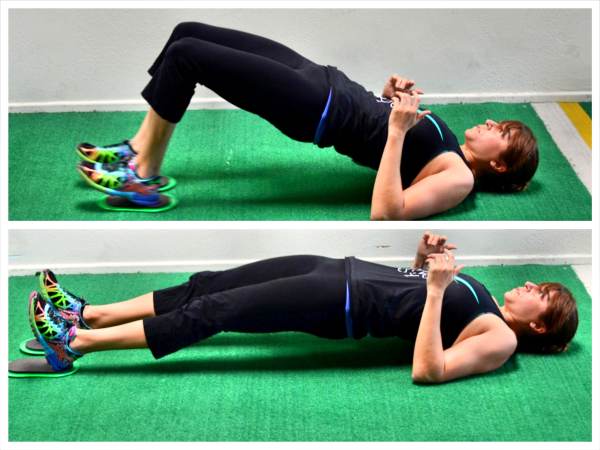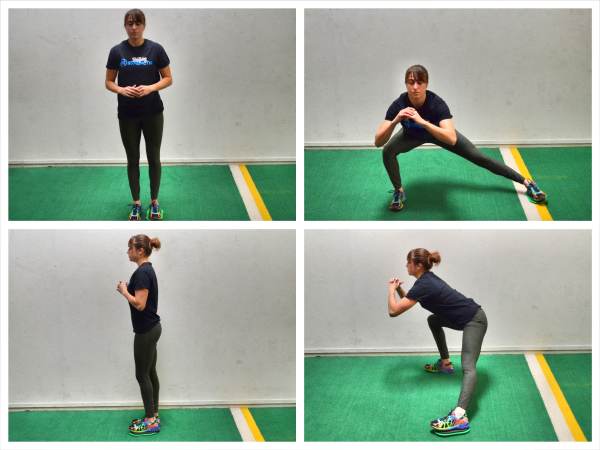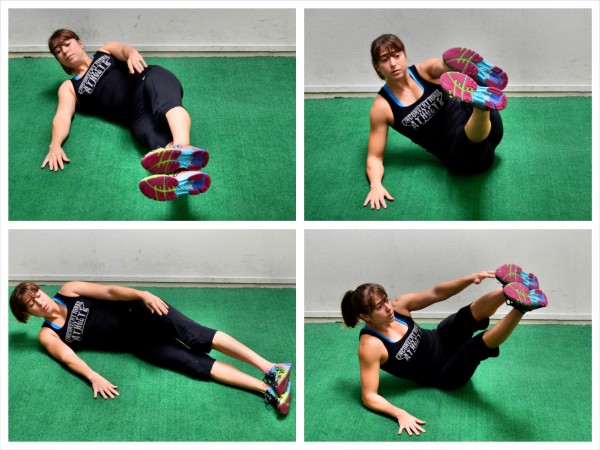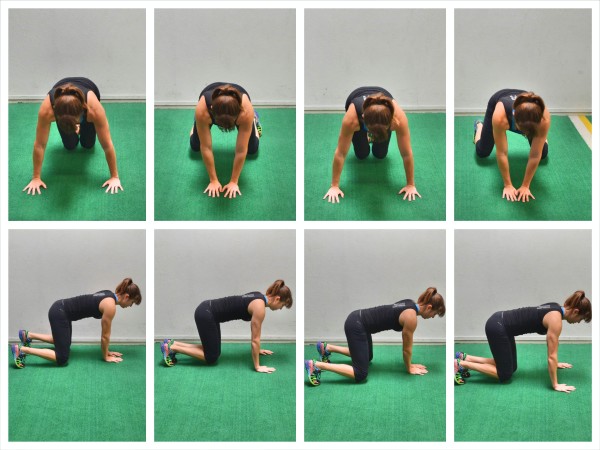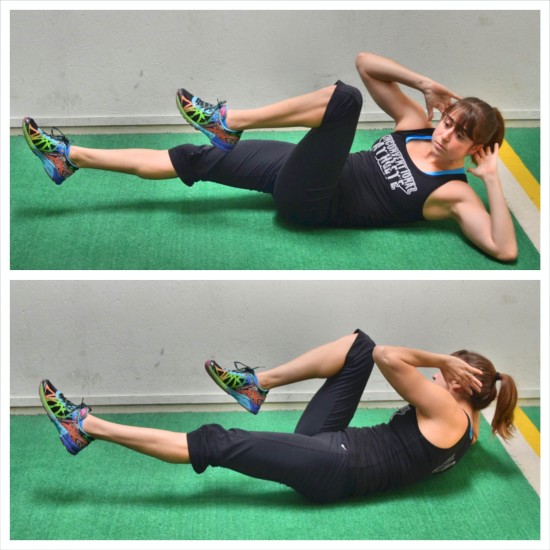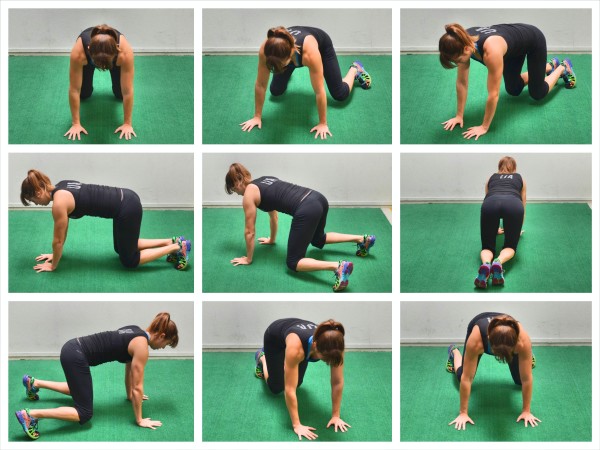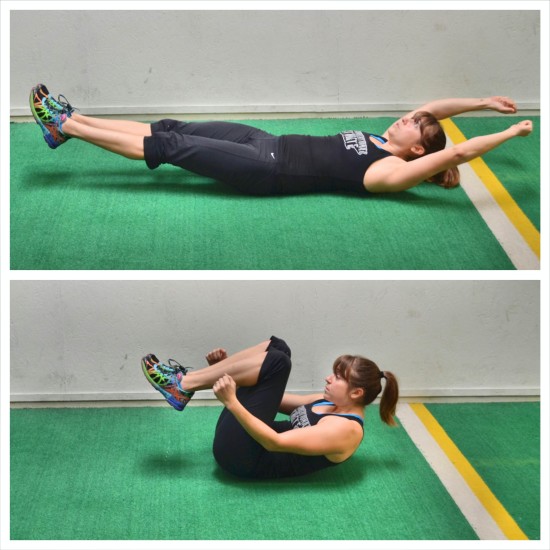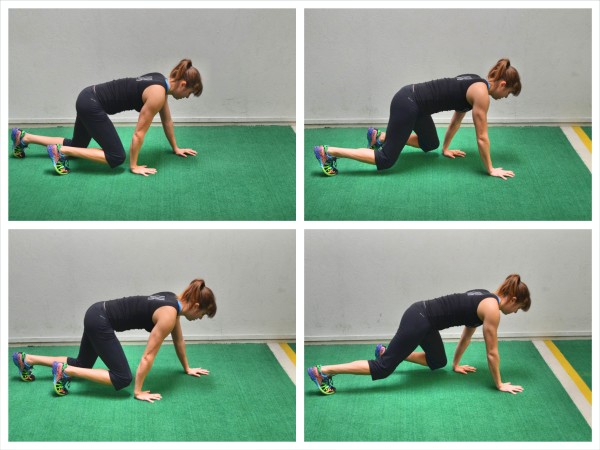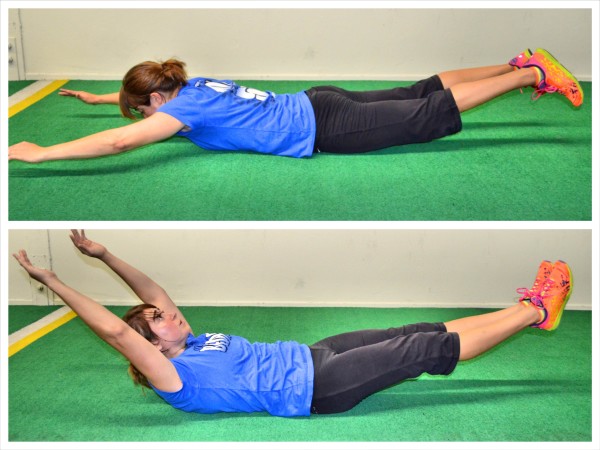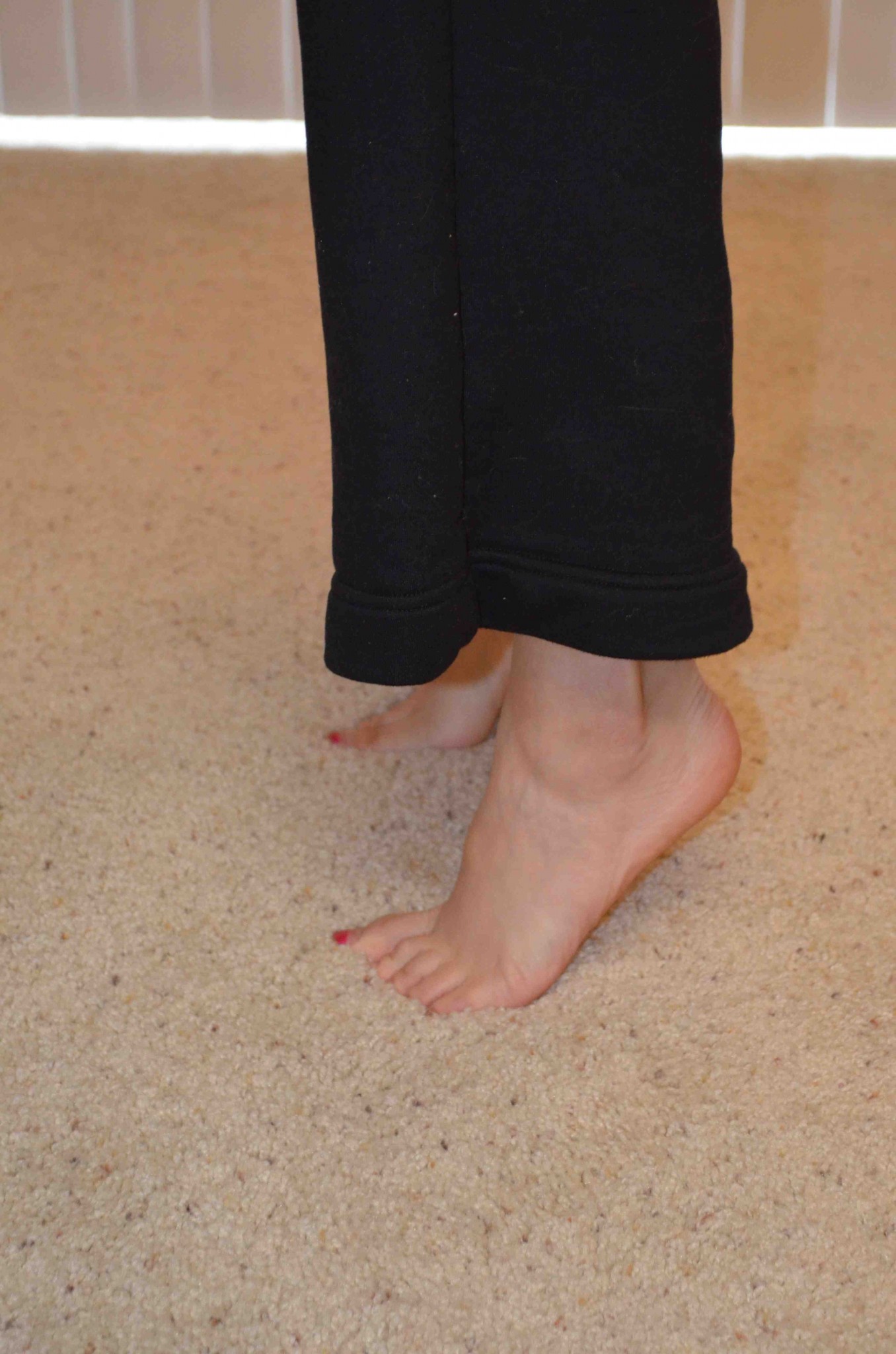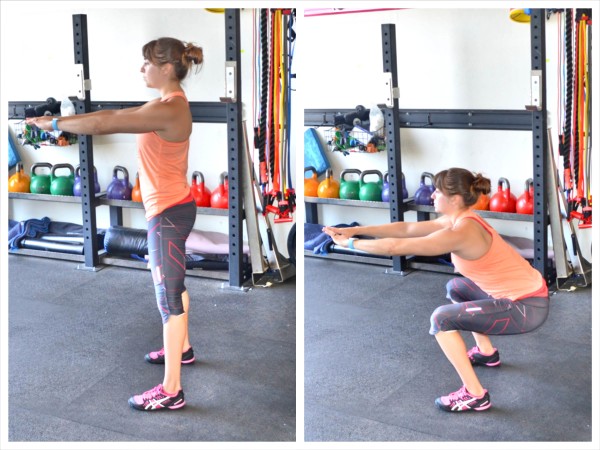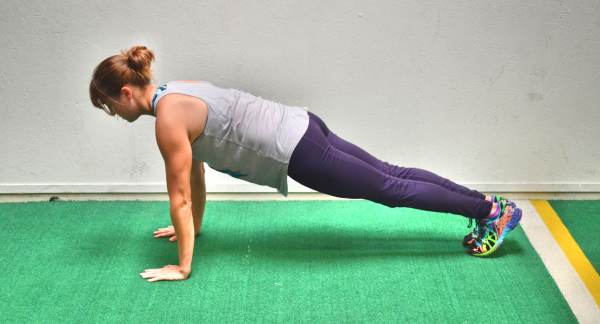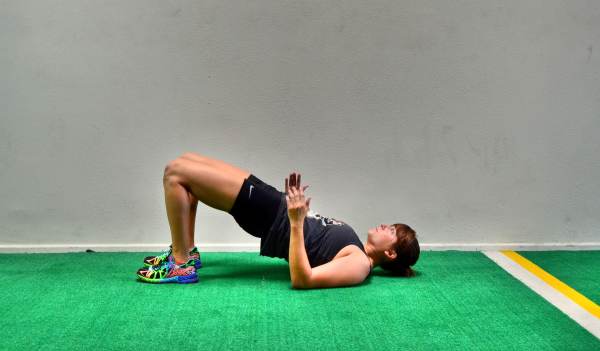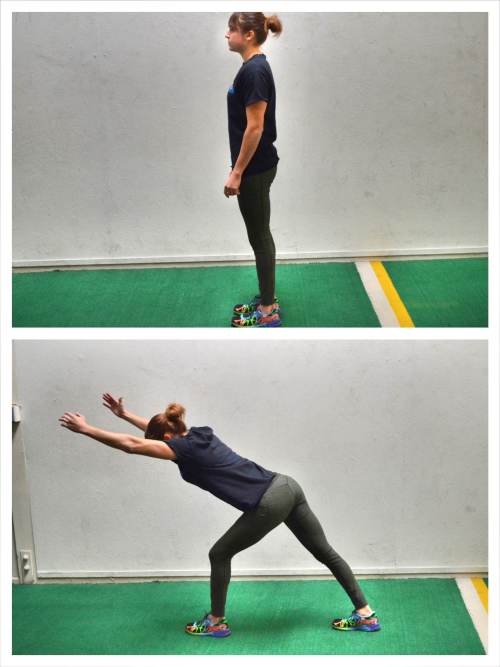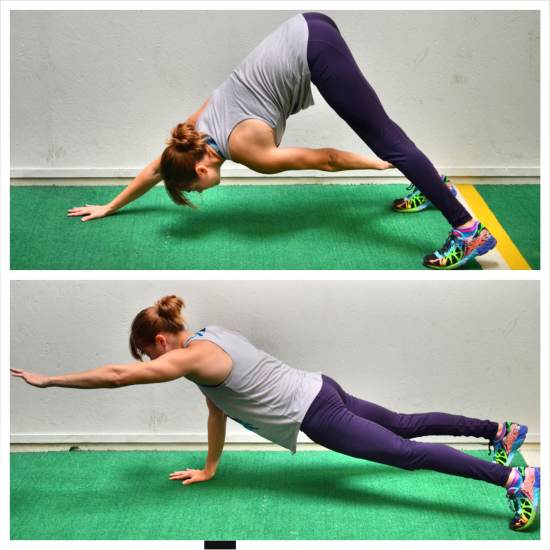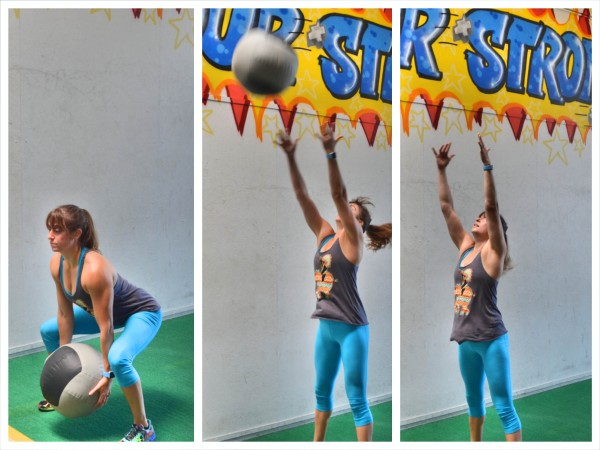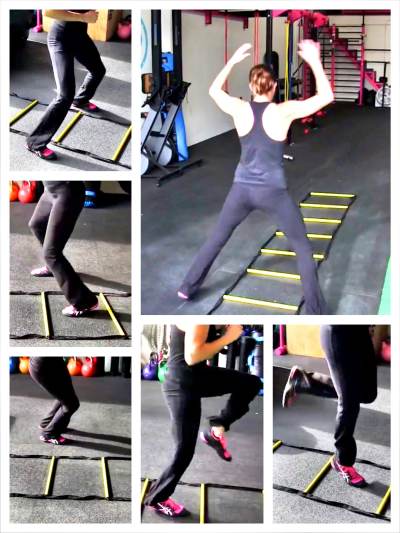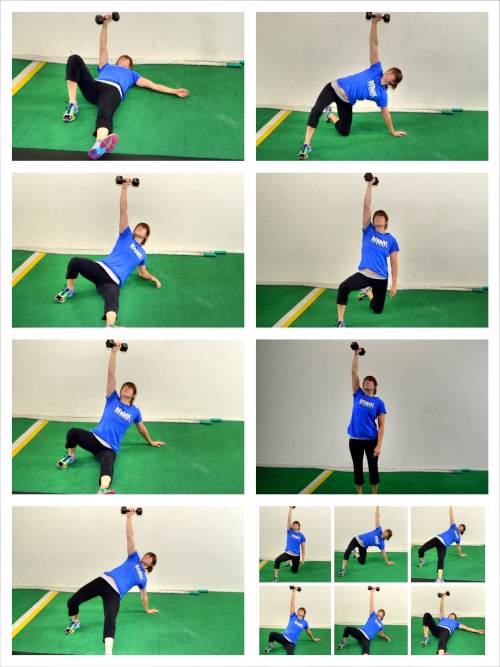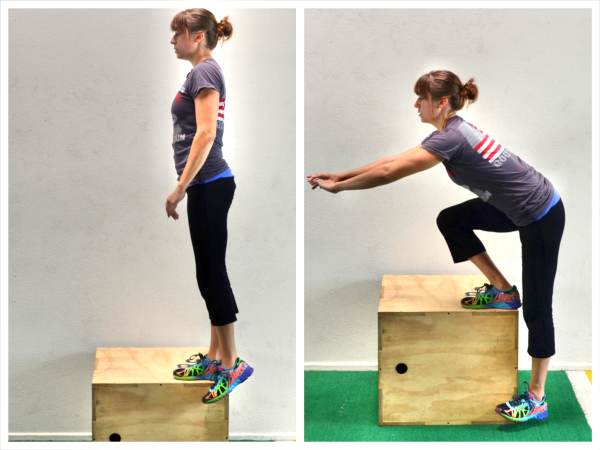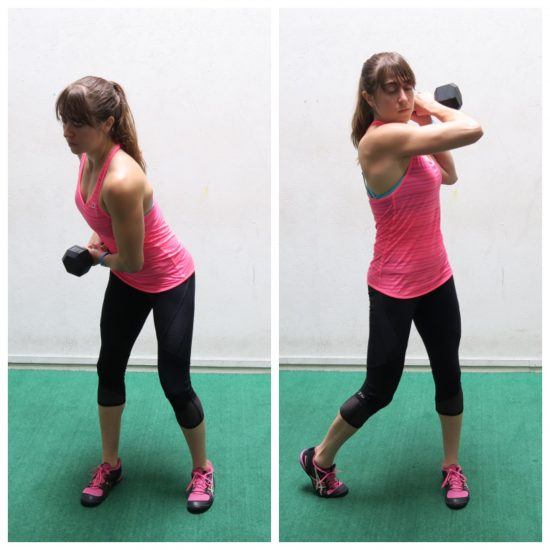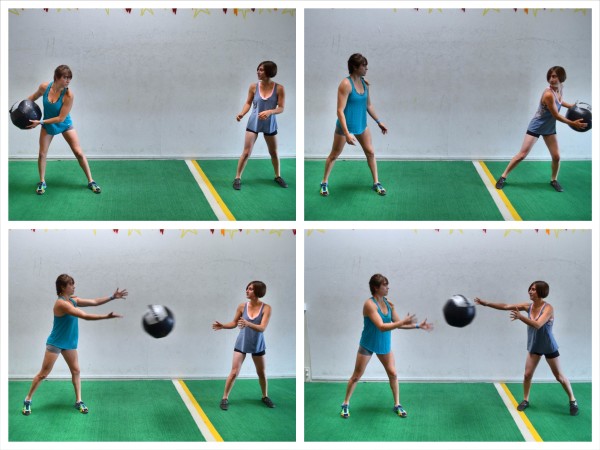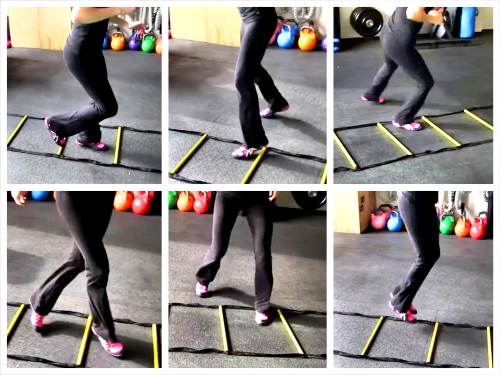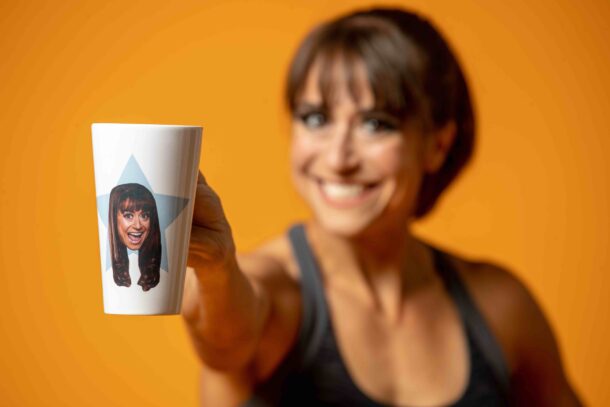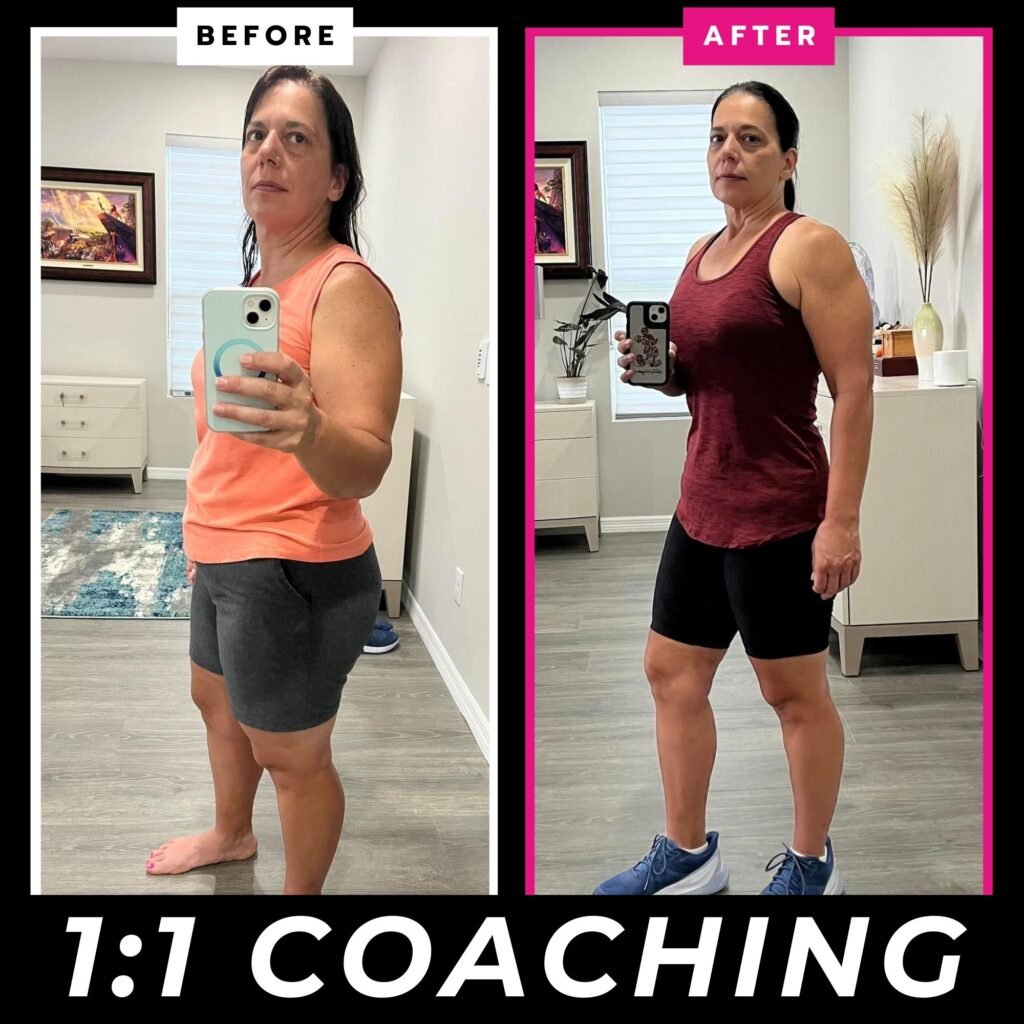WARM UP
Stretch and Roll Out:
Calves
Hamstrings
Quads
Groin
Hips/Glutes
Chest/Shoulders/Traps
Back/Lats
WORKOUT
Complete 3-5 rounds of each circuit. Rest 30 seconds to 1 minute between rounds. Then rest 1-2 minutes between circuits.
CIRCUIT #1:
SAQ Drills:
1 length Ladder Drill
5-10 reps Bobcats
5-10 reps Hinge Throws for Height
CIRCUIT #2:
3-6 reps per side Turkish Get Ups
CIRCUIT #3:
10-15 reps per side Step Downs
CIRCUIT #4:
10-15 reps per side Dumbbell Cross Body Chop
COOL DOWN
Stretch and Roll Out:
Calves
Hamstrings
Quads
Groin
Hips/Glutes
Chest/Shoulders/Traps
Back/Lats
NOTES:
Focus on precision of movement not on lifting the most weight possible. Take your time with the moves. This is a great workout to develop core strength.
EXERCISE DESCRIPTIONS:
Ladder Drill – You can either choose to do a few different ones and get more advanced as you go or you can pick one and do 3-5 rounds of that. Remember your goal is to move quickly while not sacrificing precision. You can do a hopscotch move, the Ali Shuffle, the Ickey Shuffle or even a basic one or two foot run. Choose drills to match your experience and level. Here are some drills to help you out!

Bobcats – Perform 5-10 reps. The goal of bobcats is to get everything to move together. Choose the variation you can do quickly and with precision. To set up for bobcats, lift up onto your hands and toes with your knees bent and under your hips and your hands under your shoulders. Beginners will then quickly bend their elbows and drop their knees to the ground as if they are trying to explode up off the ground. The next level is donkey kicks, jumping the feet up and down on the ground. When that feels easy, stay on your hands and toes and next just lift and jump the hands together. To advance this move further, you will actually lift everything up off the ground and land with hands and feet hitting together. Bend your elbows and drop your knees to the ground, then explode up off the ground and quickly come back down. You don’t want your hands or feet to hit before the other. You want everything to hit quickly together. Move as fast as possible. The goal is to get your core moving quickly together. Choose the level you can not only do well but do quickly.
Hinge Throws for Height – Grab a med ball with both hands. Set your feet between hip-width and shoulder-width apart. Hinge over pushing your butt back and bending your knees slightly. Keep your back flat as you bring your hands back between your legs. Then, as if doing a squat jump, launch yourself up into the air and extend your arms up and overhead, releasing the med ball toward the ceiling. Then land softly bending your knees as you land. You can either then catch the ball and repeat quickly, hinging right back over or you can let the ball bounce and give yourself a second or two between reps. Beginners should let the ball bounce. Use a lighter ball so you can throw it high in the air; however, make sure you challenge yourself.

Turkish Get Up – Start by lying on your back on the ground with your legs out straight. Then drive your right arm up straight and have your fist pointing up toward the ceiling. Bend your right knee and place your foot flat on the ground. Straighten your left arm out to the side (not straight out at shoulder height, but not right by your body). Keeping your right arm straight up and pointed toward the ceiling at all times (it can even help to balance something on your knuckles to remind you of this while you are learning), roll up on to your left forearm. Prop yourself up nice and tall on your left forearm. Press through your right foot on the ground. Do not let your right knee cave in and keep your left leg out straight on the ground. Once up on your forearm, press up onto your left hand with your left arm going straight. Sit up nice and tall. Do not shrug your shoulders. And remember, your right arm is always straight and pointing straight toward the ceiling. Then from the seated position you are going to bridge up, lifting your hips up as high as you can. You will press down through your left hand as well as your left heel and right foot. Keep your right foot flat on the ground and your left leg out straight. Do not let your right heel come up. From the bridge position, slide your left leg back and under you so that you are in a kneeling position with your hand on the ground. Make sure you swing your leg back enough so you are in a strong supported kneeling position that will allow you to lift your left hand off the ground. Staying nice and tall, lift your left hand and come to a kneeling position. Do not lean forward of slouch forward as you lift your hand up off the ground. With your right arm still pointing up at the ceiling, stomp your right foot into the ground and come up to standing, bringing your left foot forward to be even with your right foot. Once standing, you will reverse the steps until you are again lying on your back. You will first go back to kneeling, stepping your left foot back. You will then place your left hand down on the ground out to the side and just a little back from your left knee. You will then bridge up and swing your left leg through so it is out straight in front of you. As you bridge, keep your right heel firmly planted on the ground. From there, you will return to a seated position supported by your left hand. Then you will relax down to your forearm and finally roll on to your back. Do not slouch as you move back down. Keep a nice tall posture throughout the entire move. Repeat 3-5 reps on this right side before switching. You can also do this move with either a sandbag over your shoulder or a kettlbell or dumbbell in the raised hand. Beginners may just want to start by balancing something on their knuckles.

Step Downs – Start standing on the bench or box so that you can step off of it to the side with your left foot. Your right foot will be on the edge of the box as if you are going to step down onto your left foot. Slowly hinge forward, keeping your back flat. Push your butt back as you bend your right knee, dropping your left foot toward the ground. Do not touch your left foot down. Once you go as low as you can, drive right back up to standing. Do not do more than touch your left toe down. You don’t want to be able to push off your left foot at all. Make sure you are only driving through your right heel and not using your left foot on the ground. Control your decent and then press quickly back up.

Dumbbell Cross Body Chop – Start with the dumbbell vertical outside one hip and your arms bent. Feet shold be no wider than hip-width apart. Hinge back a bit, pushing the butt backward while leaning the torso forward just a bit. Then pop the hips forward to swing the dumbbell up across the body and up and outside the other shoulder. Then lower back down to the outside of the hip and repeat. Keep your core tight and your chest up nice and tall. Explosively push the dumbbell up and across your body, but lower it back down with control. Complete all reps on one side before switching.

